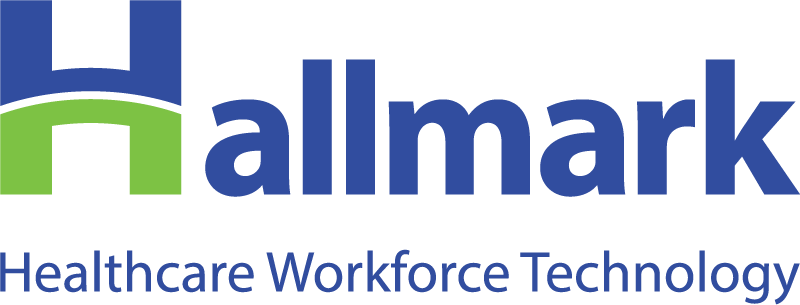3 Keys to Rebuilding Your Healthcare Workforce for the Challenges Ahead
Clinical staff management and scheduling have never been more of a headache for hospitals than during the pandemic.
Even now, almost 36% of U.S. hospitals report a nurse vacancy rate greater than 10%. Nurses are retiring in droves, and in one recent survey, approximately one-third (34%) of nurses indicated it is “very likely” they will leave their roles this year. In even greater numbers, clinical staff are leaving permanent positions to become travelers. Why wouldn’t they, when turning to agencies and contract work means they can gain more flexibility in assignments and triple their salaries?
Hospitals Turn to Contract Labor
Hospitals have answered the growing deficit by turning to contract labor. That’s not an inherently bad call. Health systems could not have survived the last two years without contract clinicians, who have always played a vital role in healthcare during unpredictable volume surges.
However, the sheer volume of contract staffing taking place at hospitals today is not sustainable. According to a Definitive Healthcare study, average contract labor expenses for hospitals have more than doubled over the last decade. Just from January 2020 to January 2022, the advertised pay rate for travel nurses jumped by 67%.
How can hospitals cope with such rapid increases and still remain good stewards of their financial obligations?
To address that question, Hallmark Health Care Solutions hosted a webinar, “Rebuilding Your Health Care Labor Force for the Challenges Ahead.” In the webinar, our experts detailed how hospital/health system executives and nursing leaders can drive more effective recruiting in the “gig” economy with technology, ultimately maximizing labor and scaling for future growth while reducing labor costs during staffing shortages. They also explained how to deploy resources that help operationalize new employment models to make you an employer of choice.
Here are three key takeaways from the webinar for rebuilding an effective, cost-efficient clinical workforce:
1: Accept that the clinical labor supply is not going back to the way it was.
This is a hard pill to swallow for many hospital executives, who continue to hope their current staffing challenges are the result of COVID-induced pressures that will ease as the pandemic itself slowly ebbs.
As your trusted partners for actionable workforce data, Hallmark will help you fill the information gaps. Unfortunately, staffing will not go back to the way it was because the pandemic was an accelerant for current labor supply issues, not the root cause. Nurse shortages were already “dire” in some places even before the pandemic. Generational turnover in the workforce and the emergence of creative employment models (mostly used by agencies to lure nurses away from their employers) were already starting to create huge shifts in the applicant market. The pandemic only sped up these changes and made them more immediate and acute.
2: Hospitals must adapt to the growing gig economy.
You can’t count on vendor pricing to automatically adjust to changing market conditions. For example, one Oklahoma health system reported This isn’t welcome news at many organizations, but whether hospital administrators agree with the shift to freelance-style nursing is irrelevant. The gig economy – an employment model that emphasizes clinician control over when, where, and how they work – has firmly taken root. Gig-style work is expanding three times faster than the total U.S. workforce, especially among people aged 18-34, with the number of independent workers in the U.S. increasing by 34% from 2020 to 2021 alone. Simply put, the gig economy is here to stay.
There is good news: Gig-style employment potentially offers a solution for the double-digit vacancy rates and a record 19.5% turnover rate. Specifically, if hospital leaders think like agencies and design workforce models that attract staff who want to work within this economy, those hospitals can turn the clinical staffing shortage on its head.
The staffing resources are out there. Right now, they’ve been captured by the agency executives who have figured out how to successfully engage them. Once hospitals begin giving the contingent workforce the professional freedom, flexibility, and control these clinicians want, hospitals will be able to compete head-on and immediately improve labor supply even while reducing labor costs.
3: Organizations must operationalize their gig-oriented workforce design.
Healthcare administrators must review clinical staffing goals in light of these changes, so they can uncover new and innovative strategies and solutions that yield better results.
For example, let’s say your organization estimates it will capture 70% of required FTEs through full-time employment models, based on historical trends and vacancy rates. Trying to use contract labor for the remaining 30% is not financially sustainable, so you hope to get the remainder through redesigned staffing programs (i.e., an internal resource pool that competes directly with agencies) and/or in-house vendor management that effectively turns the hospital into its agency.
Those are important steps in the right direction, but there’s still a missing piece of the puzzle: How do you operationalize these new models so they achieve desired results without overburdening the clinical staffing team or the budget?
It’s all about technology. Unfortunately, hospitals are not technology companies, and their existing software isn’t usually up to the task of enabling the kind of functionality needed to attract, deploy, and manage clinical staff. Dedicated workforce management software is critical to operationalizing the changes needed. At far less than the cost of contract labor, the right technology can enable the right level of flexibility, while simultaneously helping the organization place the right resource in the right place at the right time – for the right cost.
How can hospitals turn these takeaways into actions?
Start by watching the complete webinar, where we take a more in-depth look at these issues and suggest actions hospitals and health systems can take, including how to conduct a clinical staffing self-assessment, what functionality is required when operationalizing new staffing models, and how to build a modernized internal resource pool that will attract gig-economy clinicians.
